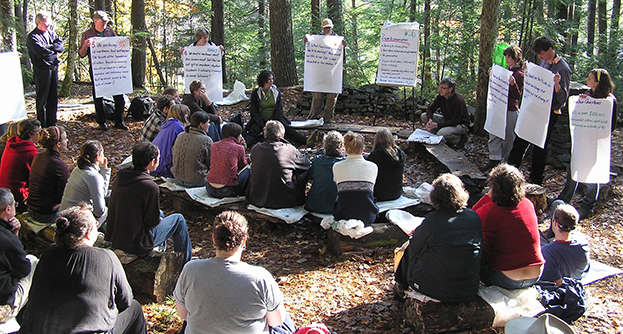Strategic Governance
Five Governance Hacks
At most hardware stores you can now buy a light bulb that works when there is a power outage. They typically provide a few hours of emergency light around your home. Someone came up with the idea of putting a small battery in the base of the bulb that stays charged when in normal use … Read more
Old Business – New Business
Non-profit boards usually meet monthly or quarterly and most of those meetings involve multi-item agendas. Tradition tends to rule what the design of the agenda looks like. I think this is unfortunate. This post looks at some easy to adopt ideas that, for most, will represent a departure from their current agenda practices.
If board chairs and executive directors, the two people most responsible for the agenda, are prepared to experiment with some new board meeting elements they can give more spring to their organization’s governance step.
Executive Director Reports
One of the most enduring features of non-profit board meetings is the executive director’s or CEO’s report. There are few resources that offer good practice recommendations. Aside from the consideration of level of detail, few boards and EDs together give much consideration to what subject matter should be included.
So, I have some of my own suggestions, informed by my board experience and from two other sources, about the content of such reports. Despite the model that I suggest here, nothing beats a board-ED discussion of key content areas and even a little experimentation with actual board reports.
Governance as a Bus
In 2001 Jim Collins, an American consultant, became a star in management circles with his book, Good to Great: Why Some Companies Make the Leap…And Others Don’t. In it he compares a business to a bus and the leader to the bus driver. Today, people often say that business success is dependent on getting the right people on the bus.
A similar metaphor can help us in understanding the work of non-profit governance. As you will see though, it has a different twist.
Board Orientation Rejigged
Board orientation refers to a process for helping newly elected directors contribute fully, and as early in their term as possible, to the governing work of the board. Very often it takes the form of a special meeting designed to provide information to these directors about their responsibilities and the operations of the organization.
Is it enough to assume that the goal, simply stated, is to transfer important information and respond to questions from new directors? From an adult education perspective I think board orientation could benefit from the articulation of some specific learning objectives
Easy Board Home Improvements
Living in an 100+ year old house means getting used to a life with a long and never completed home maintenance agenda. Something always needs repair or replacement. And, out there in the world there is no shortage of additional household improvement ideas I could add to my list.
Distinguishing Strategy
I was having coffee the other day with friend at the Humani-T Cafe on South Park Street in Halifax. In the course of a wide-ranging conversation about non-profits, she related a story about a organization she knew of whose board said they could not do strategic planning because they did not have the resources.
The board needs to get out more
In the June 24, 2011 edition of the online publication Philanthropy Journal, Terrie Temkin, a Florida-based consultant, suggests that “the board needs to get out more”. This struck me as being really good advice.









